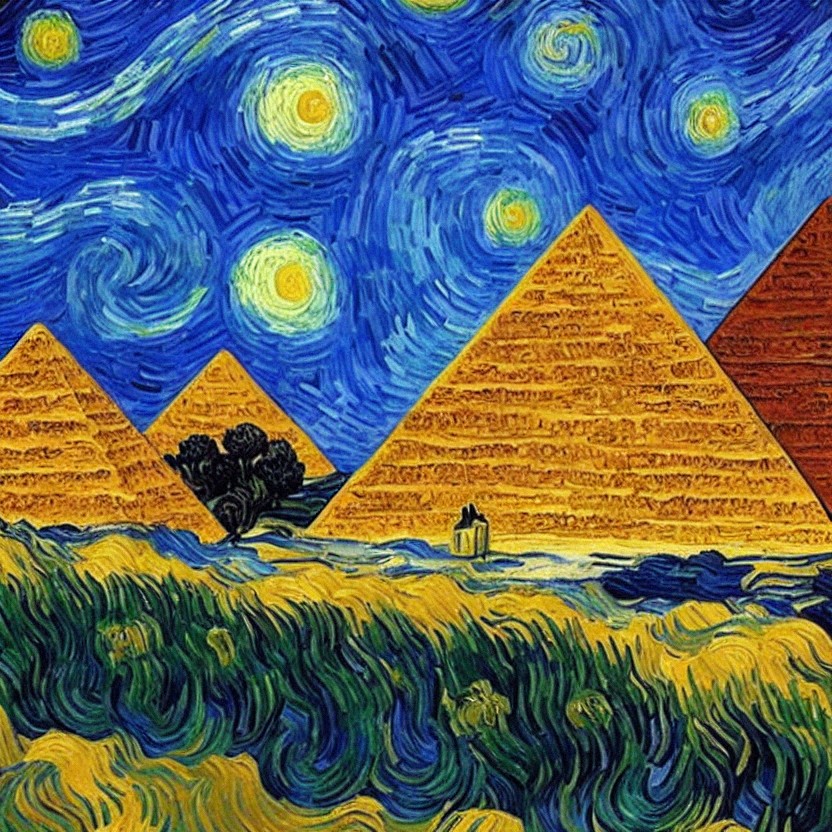AI generated image of “The Pyramids if painted by Van Gogh” Image generated by NeuralLove.
The art world has been changed by the introduction of AI-generated artwork and digital artists are skeptical of how it will impact arts and culture.
Artificial intelligence or AI art generation, while not a new concept, was a largely inefficient way of creating art until recently. The process works by feeding an AI thousands of images from the Internet, creating a basis for which the AI can generate new images
AI generation of images is now easier and more accessible than ever, with websites like craiyon and NightCafe offering the service for free. There is uncertainty in the digital art community on what role AI generated art will play in the art community going forward.
Controversially, some of the images that are being fed to the AIs belong to digital artists, meaning they are effectively having their style stolen.
Haley McGougan, a traditional arts student at the University of Lethbridge and digital artist themselves gave their thoughts on the art theft that has been occurring. “A lot of AI art is trained using artworks from other very famous digital artists and traditional artists,” McGougan said.
AI-generated art used to be used to replicate and try to recreate the style of artists that have been long deceased, trying to replicate their style as close as possible.
“It used to be that they would take artists Like van Gogh and regenerate images in that sort of sense, but now they’re taking famous current digital artists and training their AI on that artwork,” McGougan said.
In a recent example of this, the popular Korean artist Kim Jung Ji had his art fed to an AI only a week after he passed away in October of 2022. While the creator of that specific model of AI-generation saw it as a tribute to the late artist, others saw it more as art theft.
“This person thought that they were doing a good thing in their memory, but I don’t think so. This is not okay, we can’t be cannibalizing artists that just recently passed,” McGougan said.
While AI can be potentially damaging to artists, there is also some that believe that AI can be a helpful tool to those learning art. Sam Whittle, a digital artist in her spare time, expressed how she could use AI art to improve her own artwork.
“With AI art, you get a chance to have this reference point that isn’t necessarily anybody else’s art,” says Whittle.
There are AI programs that can alter or assist in the creation of certain digital art pieces. Programs that allow for certain art pieces to be ‘red lined’ by an AI. Red lining being the process of submitting your art piece to another artist for feedback, where they will then draw over it with typically red ink to give feedback and suggest edits.
There also exists certain programs that can alter the lighting of digital images, detecting the characters or scene of a digital image and changing the lighting based on their position. These types of tools can be useful to artists that are just beginning to create art.
While still imperfect and somewhat divisive, AI-art generation continues to develop, becoming better and more accessible each day. Only time will tell if AI art is here to stay or if it will be only a passing fad.

